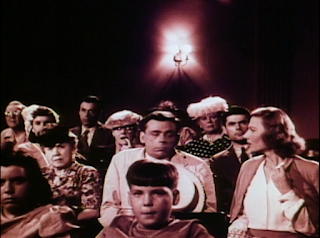I could go on for hours about how much I love the classic theatrical Popeye cartoons. Both the Fleischer, and Famous studios cartoons. Well unfortunately most of the black and white cartoons were made by Fleischer's meaning most of the great classic Fleischer Popeye cartoons were ruined. All I have to say about that is, good thing the two reelers were in beautiful color. Only a few Famous cartoons were redrawn as Famous Studios brought the Popeye series into full color production in 1943. All of them were redrawn including the banned WW2 era shorts like "You're a Sap Mr. Jap" although I can't find any evidence of those anywhere online other than hearsay. I'll just assume they were although I don't see why they would've been considering none of the Tuner networks ever aired them. It is entirely possible they aired on a local TV station somewhere as Tuner did syndicate these redraws on the barter system for a few years. The quality of these is a step up from the Looney Tunes redraws from 68 but that's not saying much. They're still pretty poor especially compared to the black and white originals. Also because Turner sent over the TV masters for these things, the a.a.p. logo got redrawn.
Next up the Harman and Ising Merrie Melodies. When Warner Brothers sold it's black and white cartoon library to Sunset Productions/ Guild Films in 1955 for whatever reason the black and white Harman and Ising era Merrie Melodies were not included. The following year when WB sold it's pre 1950 film library including the pre 1948 Looney Tunes and Merrie Melodies to Associated Artists Productions or a.a.p. the cartoons were included in that package. The cartoons were sent over to Entercolor Technologies to be redrawn like the Popeye cartoons in 1987. The quality of these are better than the Porky redraws from 68 but seem slightly worse than the Popeye redraws as if that means much. The tracing of the characters can be off at times. From the few I watched, as I couldn't find all of them there didn't seem to be any real glaring animation errors just cruddy tracing of the characters mostly and poor color choices.
The king is far too pleased.
Of course we can't forget spelling errors!
Pictureo?
Hey at least it's not Wimby's.
You won't really be seeing these on TV anymore at least not American anyways these haven't seen airtime on Cartoon Network or Boomerang in quite some time. I don't know about other countries. The screenshots I have are from airings of the Merrie Melodies cartoons on a Ukrainian TV station.
Well that's all for now. Next time these redraws enter our prescense we'll look at the Radio and Televison Packagers redraws. A strange package of public domain and non public domain unoffical redraws.































































